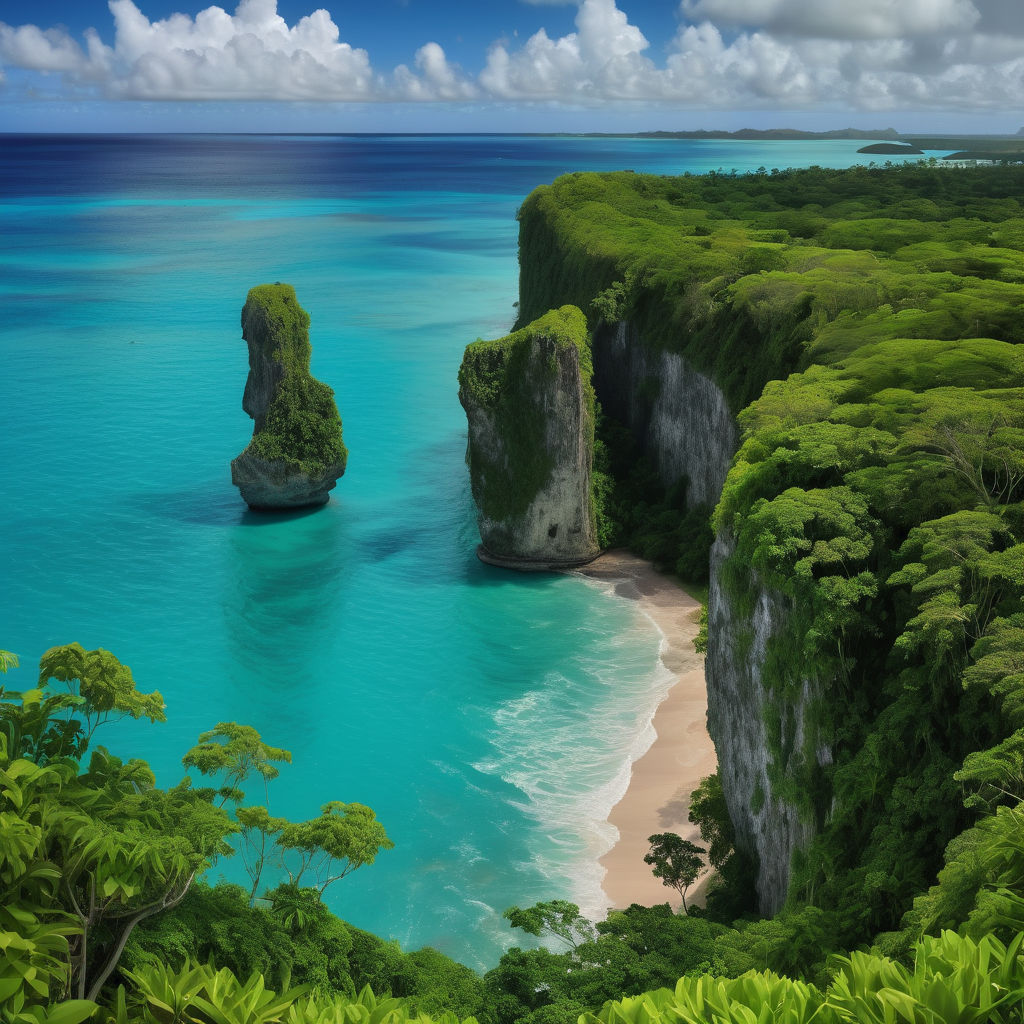Introduction to Guam: A Cultural Crossroads in the Pacific
Discover Guam: Blending Chamorro Traditions with Modern Influences

Introduction to Guam
Guam, an unincorporated territory of the United States, is located in the western Pacific Ocean. It is the largest and southernmost of the Mariana Islands, lying about 3,700 miles west of Hawaii and 1,500 miles east of the Philippines. The capital city, Hagåtña, serves as the cultural and administrative center, while Tamuning and Dededo are among the island's major urban areas. Guam's cultural heritage is a vibrant blend of indigenous Chamorro traditions, Spanish colonial influences, and modern American culture, creating a unique and diverse cultural landscape. The rich cultural heritage of Guam is evident in its traditional dances, music, and crafts. The island's history is marked by centuries of Spanish colonization, followed by American influence after World War II. This diverse history is celebrated in festivals such as the annual Guam Liberation Day, which commemorates the island's liberation from Japanese occupation, and the Guam Micronesia Island Fair, which showcases the cultural heritage of the Chamorro people and other Micronesian communities.
Cross-national and Cross-cultural Understanding
The people of Guam, known as Guamanians, are generally open and welcoming towards other cultures. This openness is influenced by Guam's strategic location as a crossroads in the Pacific and its long history of cultural exchanges. Guamanians value cross-cultural understanding and are accustomed to interacting with people from various backgrounds due to the island's diverse population and its role as a major tourism destination. Cultural exchanges play a significant role in promoting cross-cultural understanding in Guam. The island hosts numerous festivals and events that celebrate both local and international traditions. The Guam Micronesia Island Fair, for example, brings together participants from across the region to share their cultural practices, fostering mutual appreciation and understanding. Additionally, the Guam International Film Festival showcases films from around the world, providing a platform for cross-cultural dialogue through cinema. Educational programs in Guam also emphasize global awareness and cross-cultural understanding. The University of Guam offers a variety of programs that incorporate multicultural perspectives, encouraging students to appreciate and respect diversity. International partnerships with institutions in Asia, the Pacific, and the United States facilitate student and faculty exchanges, enriching the educational experience and fostering global connections.
Interactions and Social Dynamics
Typical interactions between Guamanians and foreigners are characterized by friendliness, respect, and a strong sense of community. Social behaviors in Guam reflect a blend of traditional Chamorro values and contemporary influences, emphasizing respect for others, hospitality, and communal living. Communication styles in Guam are generally informal and friendly. English and Chamorro are the official languages, with English being widely spoken and used in education and government. The use of Chamorro is encouraged in cultural and familial settings, reflecting the island's efforts to preserve its indigenous language. This bilingualism facilitates communication and helps bridge cultural gaps between locals and visitors. Cultural norms in Guam place a strong emphasis on respect for elders, community involvement, and a relaxed approach to life. These norms create a welcoming and inclusive atmosphere for foreigners, who often find it easy to integrate into the local way of life. Public displays of affection are generally acceptable, reflecting the island's relaxed social attitudes.
Views on Dating and Relationships
Attitudes towards dating and relationships with foreigners in Guam are generally positive. Guamanians are open to forming relationships with people from different cultural backgrounds, recognizing the enrichment that such diversity brings to their lives. However, cultural expectations and traditions do play a role in shaping these views. Family involvement is significant in relationships in Guam, with elders often playing a crucial role in the approval process. Traditional customs emphasize respect, patience, and the gradual building of trust in relationships. While modern dating practices influenced by global trends are becoming more common among younger generations, traditional values still hold sway in many communities.
Marriage and Family
Marrying a foreigner in Guam involves navigating both legal and social considerations. Legally, the island follows U.S. regulations governing marriage, including residency requirements and the need for proper documentation. Socially, cross-cultural marriages are generally accepted, though couples may face challenges related to cultural differences and integration. Familial acceptance is a key factor in cross-cultural marriages. Guamanian families can be protective, and gaining their approval is often essential for the relationship's success. However, the diverse cultural landscape of Guam means that many families are already familiar with and accepting of different cultural backgrounds, which can facilitate smoother integration for foreign spouses. Trends in cross-cultural marriages reflect Guam's open and inclusive society. Many Guamanians who travel abroad for education or work form relationships with individuals from various cultures, bringing back diverse customs and traditions that enrich the local community.